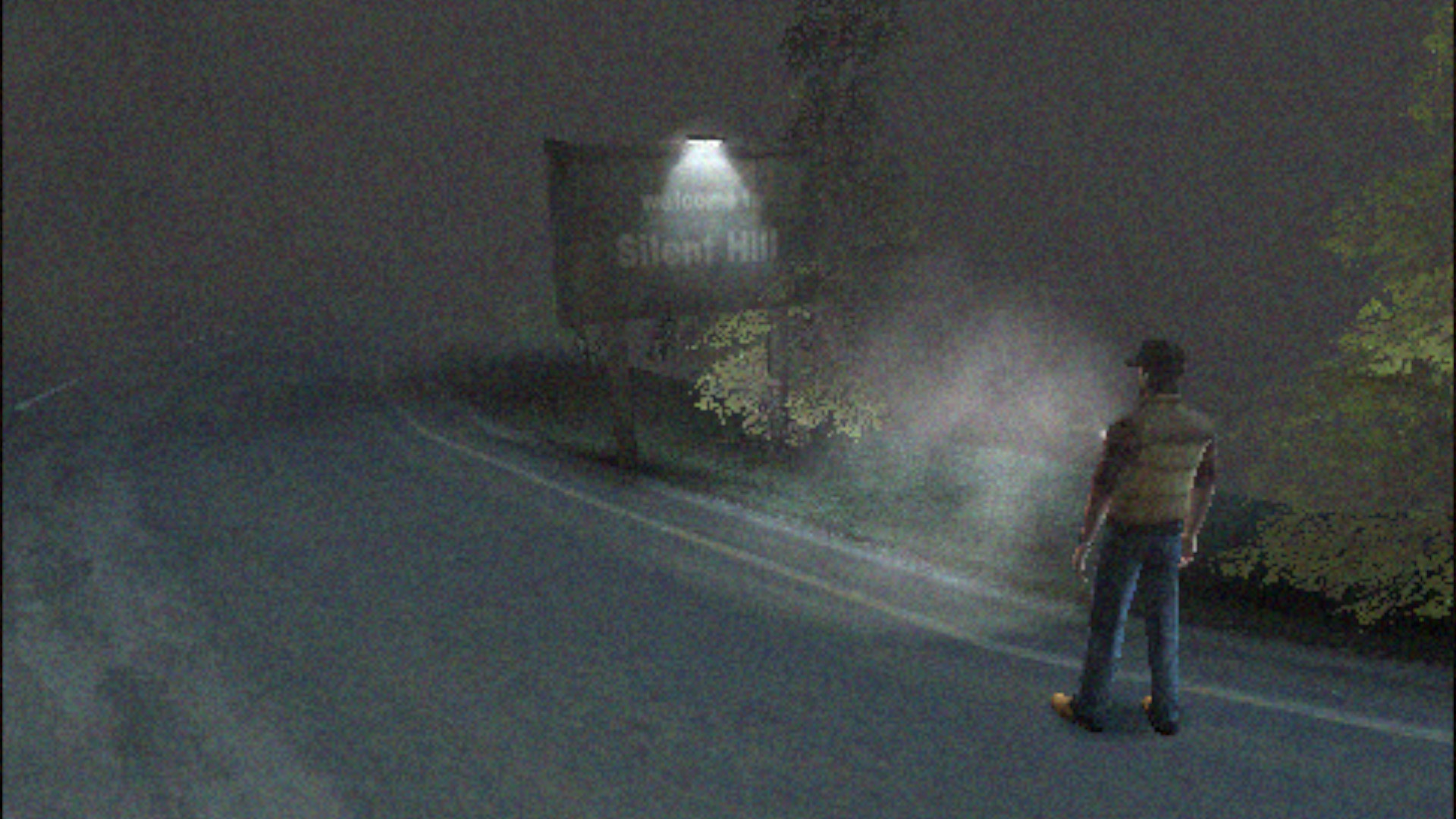
After years of nothing but radio static, Konami has found the Silent Hill frequency once again. Bloober Team's shiny overhaul isn't the only significant attempt to keep the series going – it doesn't take a village, it takes a whole town.
The remake of Silent Hill 2 is just the latest game for which Western talent has been brought in to continue the series. To ensure the developers are not left lost and alone we're stepping back into the mists of time to talk to those who have stewarded the series throughout those years. We're also looking ahead to a future that seems just as kaleidoscopic – we know Silent Hill f and Silent Hill: Townfall are in production, though details have yet to be revealed. Perhaps Silent Hill has no essential element, no single defining feature, only ever-shifting aspects that merge and split like restless dreams.
Silent Hill: Origins puts you in the worn boots of Travis Grady, a lonely trucker who, one fateful night, takes a shortcut via the infamous resort town. After rescuing a horribly burnt Alessa Gillespie from a burning building he quickly becomes embroiled in the town's sinister cult dealings, and is forced to face the horrors of Silent Hill while confronting his own tragic past.
Origins was produced by Konami's US office, which would handle all subsequent Western-made Silent Hill games. Initially conceived as a remake of the first game, it was changed to a prequel when it became clear that the scope of a remake meant it would be prohibitively expensive. From there, Origins is a tale of two games: an early build by developer Climax Studios' Los Angeles team; and the final version, completed by Climax's Portsmouth-based outfit in Britain. The original American version was – put bluntly – a mess, featuring a Resident Evil 4-inspired over-the-shoulder perspective, zombie-like enemies, and a hammy, B-movie like approach to its narrative.
"The game was supposed to be silly," recalls Sam Barlow, then lead writer and designer in Climax's Portsmouth office. "It was supposed to be like Evil Dead 2, with the dark humour of the TV show Scrubs."
Back from the dead

This early build made major changes to the lore and tone established by the four previous Silent Hill games. The members of the town's cult – Origins' central antagonists – were presented as clichéd robes-and-skulls villains ("Like Scooby Doo characters" says Barlow), while some vital characters underwent complete revisions.
"There were characters like Dr Kaufmann, who in the original game is presented as this young, Bill Pullman-like, Lost Highway-looking guy who's being introduced to supernatural elements for the first time and is freaking out. Except in this version, he was 60 years old and a professor of quantum dynamics. You'd find him experimenting on zombies and saying things like, 'Fascinating, this shows the quantum sphere has broken' – it was totally nonsensical for Silent Hill."
Barlow and the team pushed back, insisting that this goofy take on Silent Hill would be a disaster. Konami accepted the need for changes, but with a caveat: the original budget and release window would still apply. In addition, Origins would have to include several FMV cutscenes that the US team had already gone to the expense of producing. These largely determined the core narrative elements that define the final version – Travis the protagonist, the inclusion of Alessa and the Order, the presence of the Butcher (an obvious riff on SH2's Pyramid Head), and the 'Flauros', the magical macguffin that drives most of Origins' plot.


Revisiting foggy streets? I love Silent Hill 2, but remakes would be better off as second lives for games that truly need it.
Within two weeks, Barlow had feverishly rewritten the game's plot, script, and storyboard around the existing elements. Travis went from being a blank-slate everyman to someone with a connection to the town and the locations he moves through. Zombie-like foes were ditched, reworked into Barlow's own designs, which were meant to be in keeping with previous entries. (Some ideas didn't quite work: one scrapped idea for a final boss was of an enormous chair with the face of Travis' father on it.) Mechanically, Origins is very similar to what came before, with the addition of breakable weapons and the ability to use mirrors to enter and leave the Otherworld version of Silent Hill at will. Revisiting ideas from the very first PS1 game, Origins is the closest a non-Team-Silent-developed entry has come to replicating the classic Silent Hill mechanics.
At launch, the game received generally positive reviews, although it didn't have the impact of the Japanese games. By their own admission, this was something the developers had been realistic enough not to expect, and it's a testament to their ability as a team that they managed to produce a decent Silent Hill title within the constraints they'd been given. "Sometimes people ask me, 'What's the game I'm most proud of?'" says Barlow. "Creatively, it's probably a different answer. But in terms of what we achieved in such a small period of time, it has to be Origins. Because to take something where there wasn't really a game – that was just going to be a tragedy – and to pull it out of the bag with a seven-out-of-ten game was incredibly rewarding." He'd be back for more.
This feature originally appeared in PLAY Magazine – which printed its final issue in 2024. In the mood to explore some foggy streets? Then check our best Silent Hill games list!







